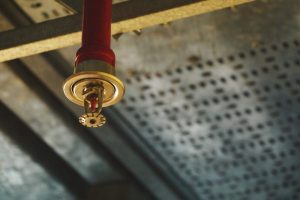Back to Basics is a weekly feature that highlights important but possibly overlooked information that any EHS professional should know. This week, we examine inspection, testing, and maintenance of fire protection systems.
If there’s a fire in your facility, sprinkler systems can make a big difference in terms of reducing the chance of dying, as well as preventing property damage. But this depends on whether your sprinkler system has been properly designed, installed, and maintained. This puts an emphasis on the importance of Inspection, Testing, and Maintenance (ITM) of water-based fire protection systems.
The National Fire Protection Association (NFPA) recently wrote about this in a blog post, focusing on its NFPA 25, Standard for the Inspection, Testing, and Maintenance of Water-Based Fire Protection Systems. NFPA 25’s requirements are designed to ensure “a reasonable degree of protection for life and property from fire through minimum” ITM methods for water-based fire protection systems.
In addition to inspecting and testing system components, the NFPA says you should evaluate factors that affect system performance, including:
- occupancy changes
- process or material changes
- building modifications such as relocated partitions or ceilings or the addition of mezzanines
- modifications to the heating system that expose systems to potential freezing
The NFPA post mentions four areas of concern to maintain the proper level of protection for sprinkler systems, including:
- Adherence to a regular inspection schedule as determined by the needs of the system
- Execution of any special investigations or tests that can assess the performance of the devices and equipment
- Exercise of due diligence in the repair of devices and equipment
- Assurance that all personnel involved in maintenance are properly trained to correctly execute the procedures for ITM of equipment
Another advancement that can prove helpful is automated inspection and testing, which mimics what used to be a manual process and produces the same outcome, according to the NFPA. For example, a sensor on a fire pump housing that records the temperature during testing can get the same results as a person measuring the temperature manually. However, there are some inspections and tests that require the presence of a qualified person.
You can also use data collection and analysis on fire protection systems to determine whether there can be a change in the required ITM frequencies, as well as to determine whether real-time monitoring of the equipment can be used to detect an upcoming system failure.
You can learn more about ITM of water-based fire protection systems on November 16 at the NFPA Conference series.

